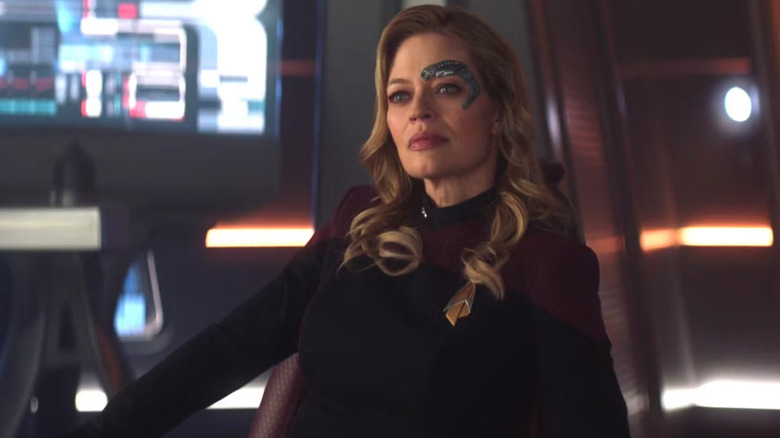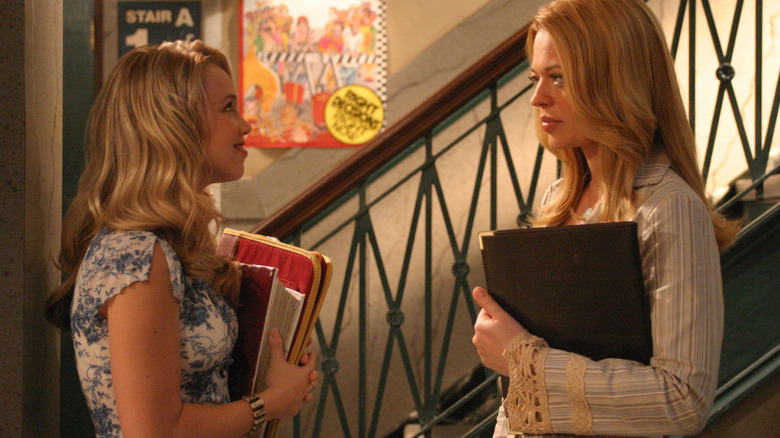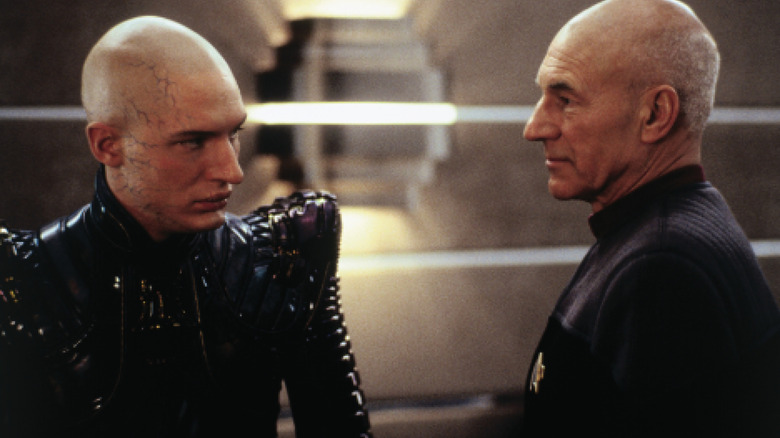Stuart Baird’s 2002 film “Star Trek: Nemesis” was one of the franchise’s several death knells to come during the early 2000s. “Star Trek: Voyager” came to a close in mid-2001, ending a long-running period of Trek ascendancy. “Star Trek: Enterprise” debuted in late September 2001, and it served as a prequel to the original “Star Trek,” set a century before the days of Captain Kirk. It looked different, had a different tone, and aimed to bring Trek to a new generation. Sadly, because of the 9/11 attacks, the world was no longer in the mood for a long-in-the-tooth sci-fi franchise that focused on diplomacy, making peace, and living in harmony. Audiences were now more intent on war, retribution, and violence, and “Star Trek” no longer had a place in the world.
In 2002, “Star Trek: Nemesis” was released to unenthused audiences and low box office receipts. Made for a budget of $60 million, “Nemesis” only earned $67 million worldwide, making it the lowest-grossing film in “Star Trek” history. It has a 38% approval rating on Rotten Tomatoes (based on 172 reviews), edging out only William Shatner’s “Star Trek V: The Final Frontier” (23%) and Olatunde Osunsanmi’s “Star Trek: Section 31” (18%) as the worst-reviewed Trek movies.
It’s not very good. No one, not even hardcore Trek fans, really likes “Nemesis.” Trekkies might be excited by the cameo by Kate Mulgrew as Admiral Janeway, the onetime captain of the U.S.S. Voyager, but that wasn’t enough to engage people. Also, as it so happens, Mulgrew’s “Voyager” co-star Jeri Ryan, better known as the Borg escapee Seven of Nine, was also offered a cameo in “Nemesis,” but she turned it down. According to a 2011 Nerdist podcast, Ryan turned the role down because she had just taken a gig on “Boston Public,” and wanted to get away from Trek.
Jeri Ryan didn’t want to walk away from Boston Public
Keep in mind that Ryan had just left the set of “Voyager” after four lucrative seasons. She had become the breakout star of the show, as the “Voyager” writers loved giving her stories. And while Ryan loved the fame “Voyager” brought her, she wasn’t very fond of the costume she had to wear on “Voyager,” which was a complicated and uncomfortable full-body catsuit with a built-in corset. Ryan was also fearful of being pigeonholed, wanting to define herself as an actress beyond sci-fi. David E. Kelly’s “Boston Public” was a great opportunity for her, and she jumped on it. At that point in her career, returning to “Star Trek” was not something she was interested in. She said:
“Rick [Berman] called and said ‘Do you want to be in the movie?’ And I was like “‘Hmmm.’ I just did four years in a catsuit and I just got on a David Kelley show, which was my one chance to break out of “Star Trek,” which was still frankly a fear that I wasn’t going to be able to escape that and do something else. You have very little outs in a TV series contract, so I didn’t want my first step once David Kelley made this role for me to be ‘Hey, could you let off for a couple months to do “Star Trek?”‘
Rick Berman was the longtime executive producer and head honcho of all things “Star Trek” at the time. Seven of Nine was popular, and Berman felt she would draw people into a movie. Ryan, however, sensed that Berman was only plugging her in arbitrarily and feared that Seven of Nine’s presence wouldn’t make dramatic sense.
Jeri Ryan didn’t think Seven of Nine would fit well with the Next Generation cast
Ryan was concerned that Seven of Nine wouldn’t really be jibe with the cast of “Nemesis.” Baird’s film, recall, was a continuation of “Star Trek: The Next Generation,” and starred that show’s cast. “Voyager,” meanwhile, had only minimal overlaps with the “Next Generation” characters, and Seven had little to do with them personally. Ryan suspected that she was only asked to be part of “Nemesis” because Seven was popular, and not because they had a good story idea for her. She put it thus:
“I told them if there was a reason for this character to appear in the story, then absolutely. If there was a good story reason, then absolutely. But [Seven of Nine] never interacted with any of the characters on [‘Next Generation’]. She’s never met them. Why would she be there? They would be plugging her in just to plug her in. It was just odd. So it wasn’t the right thing to do … They understood, but then he was like ‘Do you want to do a cameo at the wedding?’ And I was like, ‘No, if I don’t want to be in the movie, why would I want to do a cameo?'”
“The wedding” refers to the wedding between Captain Riker (Jonathan Frakes) and Counselor Troi (Marina Sirtis), which kicks off the movie.
Ryan did return to the role of Seven of Nine in 2020, joining the cast of “Star Trek: Picard.” By then, Seven had become a violent bounty hunter, and conceivably had time to meet with Picard off-screen to foster a friendship. Both Seven and Picard, after all, had survived a harrowing experience with the Borg, so they at least had something in common. In a 2020 interview with ComicBook.com, Ryan said she initially laughed off the invite to be on “Picard,” but when she heard the producers’ ideas for Seven, she became “intrigued.” “That made a lot more sense,” she said.




